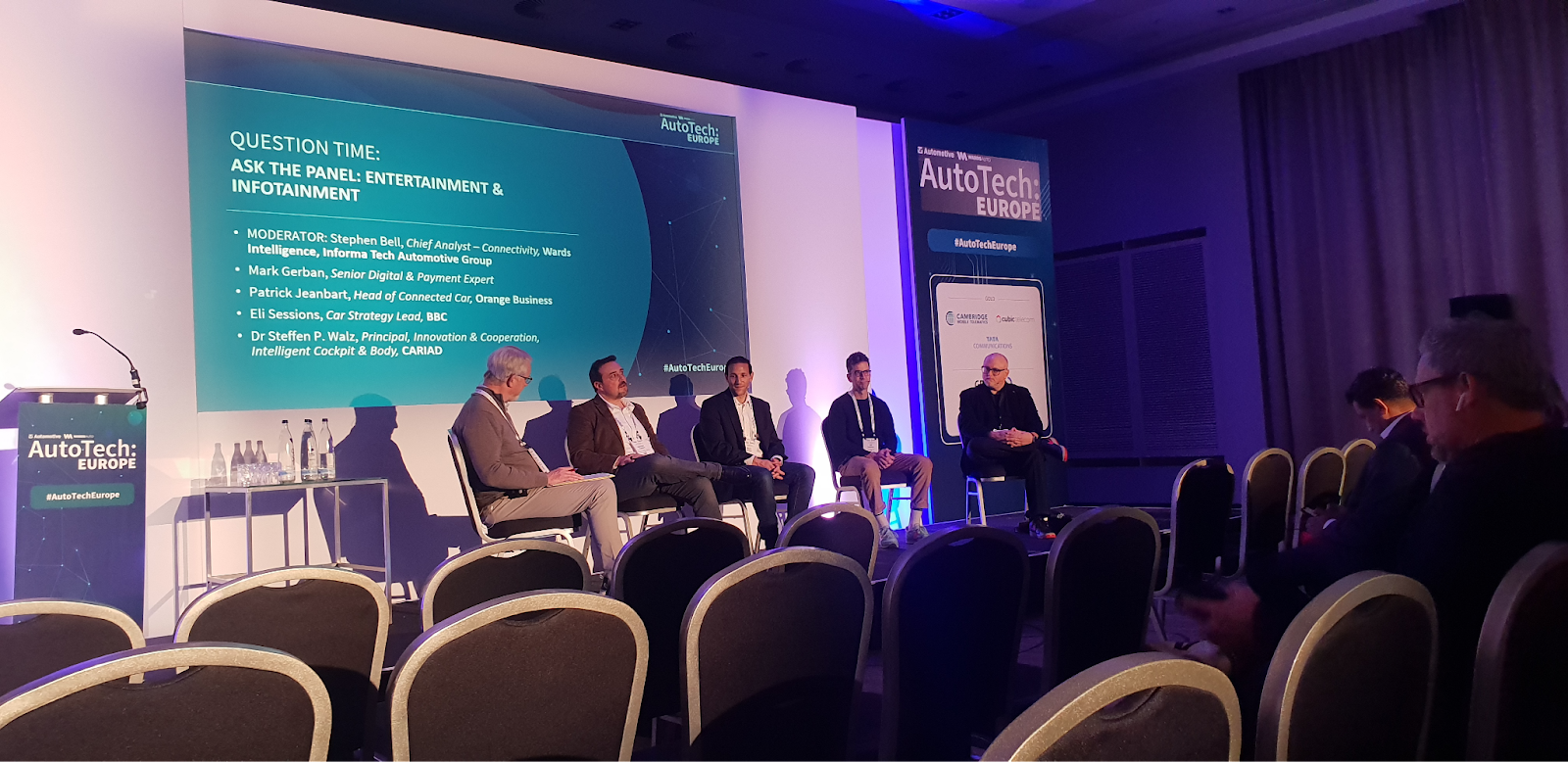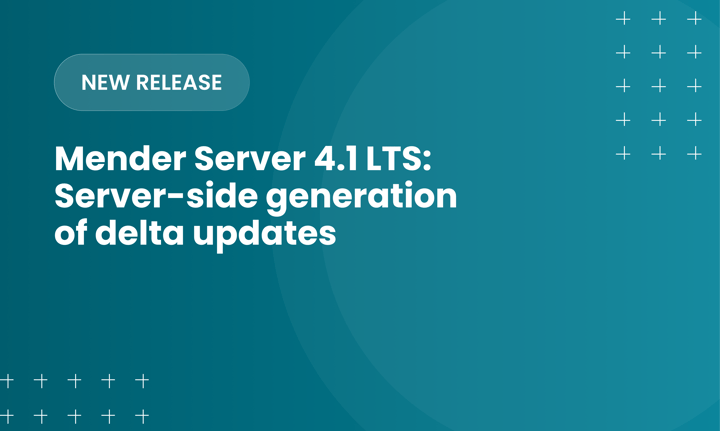 Distinguished panelists discuss infotainment and entertainment services for the software-defined vehicle.
Distinguished panelists discuss infotainment and entertainment services for the software-defined vehicle.
Automotive OEMs must innovate to move towards a successful software-defined future. The complexities in realizing this future are great with real-world global competition, supply chain pressures, and the innate need for a cultural transformation to embrace a software-centric strategy and operations. There is also a new interplay between the software development process, vehicle manufacturing, and process design. Traditionally, these elements existed in silos, creating a disconnect between what was expected by the vehicle user and what was shipped. With software-defined vehicles (SDVs), OEMs are finding that they need to take a systems engineering approach. Early on, OEMs must define the user stories involving manufacturability, process design, and the test, iteration, and validation required in software development cycles.
The Autotech Europe summit organized by Wards Auto brought experts together in Berlin to discuss the state of play for SDVs. The need for faster innovation, which connectivity and software enable, is of paramount importance.
The need for faster innovation: Increasing competition with experiences beyond the traditional vehicle
Overall, automotive OEMs struggle with tighter margins, a squeezed supply chain, and increased competition from digitally-native vehicle makers. There are now twenty Chinese OEMs operating in the European market, seeing Europe as a testing ground for innovative launches. Augustine Friedel, an analyst at MHP (a Porsche company), noted competition, innovation, and quality from the Chinese automakers are increasing rapidly, stating:
"Tesla has set the bar, but now the Chinese OEMs are moving ahead of Tesla in some aspects, and the US, European, and Japanese automakers are trying to close the gap."
Chinese automotive OEMs are innovating in consumer personalization and offering brand experiences beyond the vehicle to acquire significant market share. An ecosystem of services around the car, such as AI concierge services, is being rolled out within the Chinese market. For example, EV maker NIO offers smartphones and even daycare services in China, getting closer to the consumer and creating more monetization opportunities. Ride-sharing models have also been successful in Europe, albeit at a relatively smaller scale. David Green, CTO of Lynk & Co, shared that his ride-sharing service generated €20m in revenue, sharing €800k of the revenue with customers who can sub-rent their vehicles to other users.
There is clearly a need for faster innovation around software for more meaningful and valuable in-vehicle experiences and surrounding services, including parking, charging, and routine maintenance, but also ride-sharing and a whole range of new experiences and services.
The challenge in consumer adoption: Transitioning to a consumer-centric mindset
As a mature industry, the focus remains on margins. With a lagging mindset, the traditional automotive industry looks to ship a vehicle from production as a one-off unit and provide software features as a value-added element. While increasing competition is compelling traditional automotive OEMs to innovate, offering new services, to close the gap, they struggle with getting consumers to buy into vehicle services. Existing services, for example, have lower than a 10% activation and engagement rate. Only 14% of consumers pay for infotainment system subscriptions and only 24% stay on free trial versions.
As such, it isn’t surprising that OEMs target developers from the Google and Apple marketplace ecosystems to develop applications for in-vehicle experiences. For example, Android Automotive is increasing in popularity for in-vehicle infotainment. Polestar won a Reddot award for implementing the Android infotainment system based on the Android Automotive OS. And as Chris Fogelklou, Principal Engineer, Connected Experience Remote Features, at Polestar, explained, "Android Automotive is what the consumers feel."
Traditional automotive OEMs must raise content relevancy for decision support. Scott Lyons, Director of Integrated Services at Ford, responsible for vehicle content, stated automakers are taking an "audience first, jobs to be done" approach when assessing what kinds of experiences to develop in-vehicle content. Elli Sessions, responsible for in-car product strategy at BBC, admitted content providers are still learning about in-vehicle content experiences, stating that "learning outcomes are an important KPI for the BBC now." The BBC envisages linking contextualized content to "delight users with the next piece of content they want that comes right into the car."
Conversely, electric vehicle production requires a strategic continuum where embedded hardware encompasses a software layer that serves as a writable asset to receive continuous releases. In this approach, OEMs create valuable new experiences for consumers throughout the vehicle’s lifecycle. To increase consumer adoption of new technologies and services, traditional OEMs must transition away from a physical product mentality to a continuous consumer-centric mindset. Similar to the software world, consumers must be continually delighted by in-vehicle (and beyond) experiences to earn their subscription business, increase adoption, and generate a larger market share.
The requirement to plan ahead: Adopting a software mindset to overcome current challenges
Lyons noted a novel investment quandary for OEMs: What should they invest in? External ecosystems or internal bespoke solutions? Established players or startup companies?
Apple Carplay and Android Automotive ecosystems already have a large scale with developer and end-user traction. Yet, the Holoride at Audi, a proprietary embedded experience, was created to deliver VR experiences using the motion and movement sensing from the vehicle.
In conjunction, more OEMs are also looking to develop their electrification and software-defined vehicle platforms in-house. Traditionally, OEMs depended on a loose confederation of up to 150 vendors to provide the software modules for their vehicles.
Today, an estimated 35% to 45% of the automakers want to move towards in-house development. OEMs want to take back control. For the first time, OEMs want to own the software development process to accelerate the pace of innovation and increase competitive advantage.
To arrive at a more centralized software-defined architecture enabling fast innovation through continuous improvement at scale, the industry must overcome integration complexity at the embedded level. As such, OEMs must reduce complexity through commodification.
OEMs are also more open than ever to best-of-breed technology partnerships to accelerate the development of their SDV infrastructure. In the last 12-to-18 months, OEMs have sought more horizontal alliances with best-of-breed technology providers. Cloud hyperscale companies, such as Azure, AWS, and Google, also play an increasingly important role in helping OEMs with software development for applications such as ADAS.
The rise of OTA: From recall cost savings to a pillar of innovation
Mark Gerban, a secure digital payments expert and panel speaker, stressed that the OEMs are trying to build direct ongoing relationships with the consumer. Data licensing and rigor around user consent are crucial focus areas, as well as innovation involving shared data – for example, so that an insurance company can tailor insurance quotes to the end customer. Likewise, the navigation screen in the vehicle is becoming a hub of commerce and monetization stream.
Importantly, vehicle hardware must be designed in the beginning with the additional capacity necessary to support future and more advanced software releases post-production.
This fact means more upfront embedded hardware costs for OEMs as they lay the foundation for future software monetization. Additional hardware capacity will become increasingly crucial as edge AI applications in autonomous vehicles become more compute-intensive. Merging software with vehicles requires a laser focus on innovation – trying new things fast to find a successful product-market fit.
The automotive industry needs a mindset change to shift gears from managing tight margins to trial-and-error innovation with short feedback loops. The drive is on to release software features fast to meet customers' needs in a personalized way and create more value both at the application and embedded layers. Increasing global competition raises the stakes in the game.
The pace of innovation, monetization, and OTA go hand in hand. OTA software updates for vehicles are growing. Andrea Srozynski, MD, SBD Automotive, said that an estimated 300m vehicle models in Europe have OTA and that an estimated 127 million vehicles are getting OTA extended beyond IVI to advanced systems such as ADAS and even the Chassis. Developing simplified yet powerful vehicle hardware, software-defined vehicle architectures, and production-grade OTA for continuous releases will be foundational to the faster innovation story.
Recent articles
The differences between the US FDA’s device approval process and the EU’s medical device regulation (MDR): An essential dual-compliance framework for global manufacturers
Why OTA updates are now mission critical for future-proofed device lifecycle management
What’s new in Mender: Server-side generation of delta updates
Learn why leading companies choose Mender
Discover how Mender empowers both you and your customers with secure and reliable over-the-air updates for IoT devices. Focus on your product, and benefit from specialized OTA expertise and best practices.




